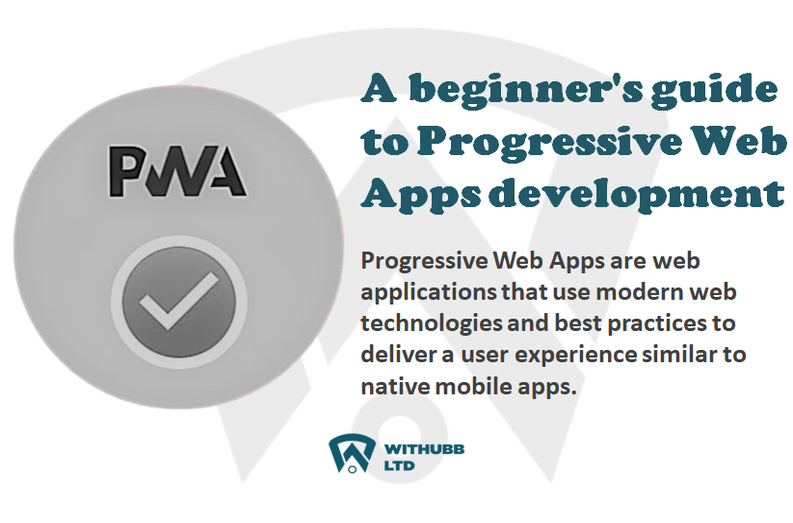Understanding and implementing MVC architecture

Welcome to the world of web development, where efficiency and structure in your projects are key to success. One of the most popular and enduring structures adopted by developers is the Model View Controller (MVC) architecture. This design pattern helps in separating the major components of a web application, which simplifies group development, allows for organized coding, and makes maintenance much easier. As we dive deeper, you'll learn how MVC works and how you can implement it effectively in your upcoming projects.
Understanding MVC Architecture
MVC, short for Model-View-Controller, is a software design pattern widely used in web development. Conceptually, it helps in separating the application data, user interface, and control logic into three interconnected components, thus promoting organized coding and sustainable software design. The Model component is responsible for managing the data and business rules of the application. The View presents this data to the user, typically through a user interface. Lastly, the Controller acts as an intermediary between the Model and the View, receiving user inputs and deciding what to do with them. By segregating an application into these three fundamental parts, MVC allows developers to modify one aspect of their application without impacting the others.
Benefits of Using MVC Architecture
Adopting MVC architecture in your web development projects offers plenty of benefits:
- Improved Organization – It naturally organizes the code by its function in the application, making it easier for teams to work collaboratively and maintain clarity in project structures.
- Enhanced Scalability – As projects grow, maintaining code without a structured framework can become a herculean task. MVC's separation of concerns allows for the scale of applications with less risk of code entanglement.
- Easier Maintenance – With concerns divided, identifying issues and implementing changes in a part of the application doesn’t interfere with the rest, thereby streamlining updates and bug fixes.
- Support for Asynchronous Technique – MVC architecture works extremely well with AJAX (Asynchronous JavaScript and XML), enabling smoother interaction of the webpages with the server and thus enhancing performance and user experience.
- Reusability of Code – Due to the separation, the same Model code can be reused across different interfaces, and combining it with different Controllers and Views can cater to various user interfaces without major changes in underlying code.
Components of MVC
Model
The Model is the central component of the MVC pattern. It directly manages the data, logic, and rules of the application. In essence, the Model represents the actual data and the high-level rules used to handle it. For instance, if your application is a book review system, the Model will manage all data related to books, reviews, and user information. Models are not concerned with user interfaces or information presentation, ensuring that the data can remain unchanged regardless of alterations in the application's interface or control flow.
Controller
The Controller serves as an interface between Model and View components by processing all the business logic and incoming requests, manipulating data using the Model, and interacting with Views to render the final output. It interprets the inputs from the user through the View, then processes the user's data with the help of Model, and provides the necessary data to the View. For example, in a blog management system, the Controller will handle tasks such as creating, updating, deleting the blog posts as well as gathering input and displaying results to the user.
View
The View component is used for all the UI logic of the application. Essentially, Views are the components that interact with the users, displaying data and accepting input. They are dictated by the Controllers and do not directly access the Model data, preserving the separation of concerns that MVC promotes. View can be any output representation of information, such as a chart or a diagram. More commonly, it’s the HTML or front-end that users interact with directly—think of it as the canvas where data from the Model is painted by the Controller.
Implementing MVC in Front-End Development
MVC (Model-View-Controller) architecture can greatly enhance the structure and maintainability of front-end development projects. By separating concerns, MVC allows front-end developers to write cleaner, more modular code, making applications easier to debug and scale.
How to Structure Front-End Projects with MVC
To effectively implement MVC in front-end development, start by clearly defining the roles of the model, view, and controller:
Model:
This should manage the data and business logic of your application. It communicates with databases or APIs and returns data to the controller.View:
The view handles the presentation layer. It should only contain logic related to displaying data to users and gathering user input.Controller:
Acts as an intermediary between the model and the view. It receives user inputs from the view, processes them (possibly updating the model), and returns the output display data back to the view.Organizing a front-end project using MVC could look something like this:
- Create separate directories for models, views, and controllers.
- Use a routing system that directs requests to the appropriate controller.
- Ensure that each part of the MVC triad only communicates with adjacent layers; for example, views should not directly query the model.
Implementing tools like Angular or React can help in enforcing MVC structures, as both frameworks come with clear conventions and extensive community support for best practices in MVC architecture.
Best Practices for Front-End MVC Implementation
To make the most of MVC in front-end development, consider following these best practices:
Keep it simple:
Start with straightforward implementations before scaling to more complex scenarios.Document thoroughly:
Clear documentation of each model, view, and controller will help maintain clarity as the project grows and more developers join.Reusable components:
Develop views and models as reusable components to reduce redundancy and improve maintainability.Test regularly:
Implement unit and integration tests particularly when changes are made to the controllers and models.Implementing MVC in Back-End Development
On the back-end, MVC serves to separate the data access, business logic, and presentation layers, making the development process cleaner and more efficient.
Integrating MVC in Back-End Technologies
In back-end development, frameworks such as Ruby on Rails, Django (Python), and Spring (Java) have built-in support for MVC:
- Ruby on Rails is perhaps the most emblematic, adopting a convention over configuration philosophy that prescribes a set layout for MVC within the framework.
- Django encourages the use of a Model-View-Template (MVT) pattern which is a slight variation of MVC.
- Spring MVC provides a robust model for handling enterprise level applications with complex business processes.
The integration process typically involves:
- Setting up environmental dependencies and understanding the specific MVC implementation of your chosen framework.
- Organizing application components into the model, view, and controller directories.
- Utilizing the framework-specific tools and libraries for routing requests and responding to HTTP/HTTPS calls.
Challenges and Solutions for Back-End MVC Implementation
Implementing MVC on the back-end may present certain challenges:- Complex configurations: Some frameworks require detailed setup before you can start using MVC effectively.
- Learning curve: Developers might find the abstraction of MVC hard to grasp initially, especially when working with frameworks that enforce strict adherence to the pattern.
Here are some solutions:
- Incremental Learning: Start with small projects to get a handle on MVC and gradually move to larger ones.
- Community and Resources: Utilize online forums, tutorials, and documentation extensively.
- Code Reviews: Regular code reviews with team members who have more experience with MVC can help new developers come up to speed.
Adopting MVC architecture in both front-end and back-end development promotes a clean separation of duties, making large codebases easier to manage and evolve. By understanding and leveraging MVC, teams can build scalable, robust web applications.
Practical Tips for Successful MVC Integration
Implementing the MVC architecture successfully into your web development projects can significantly enhance code quality and maintainability. Here are key strategies to ensure an effective integration:
Clearly Define Each Component's Responsibilities
One critical success factor in MVC implementation is ensuring that each part of the MVC structure — Model, View, and Controller — has clearly defined responsibilities. Keep the following in mind:- Model: Manages the data and business logic of the application. It should communicate with data sources and send data to the controller, but never directly interact with the view.
- View: Handles the display of information, based on the data received from the Controller. It should focus solely on the user interface and not contain any business logic or direct data manipulation.
- Controller: Acts as the intermediary that handles input from the users, processes it (often with the help of Model), and sends data to the View. It bridges the Model and the View but should avoid containing any business logic or data storage logic.
Maintain Modularity
MVC promotes modularity, which benefits the development process. Follow these points to maintain clean separation:- Develop components to be as independent as possible, minimizing their dependencies.
- Implement changes in one component with minimal or no impact on the others. This isolation simplifies testing and debugging.
- Use interfaces or abstract classes to define how components should interact, enhancing the flexibility and scalability of your application.
Advocate for Convention Over Configuration
To simplify the integration of MVC, stick to the conventions of your frameworks (such as Rails for Ruby or Django's modified MVC for Python). These conventions:- Help new developers quickly understand the structure of your application.
- Reduce decision-making overhead about where and how to implement business logic, data handling, and data presentation.
- Can accelerate the development process since the framework fills many repetitive programming tasks by default.
Case Studies of Successful MVC Implementations
Exploring how companies have successfully integrated MVC can provide valuable insights into its practical benefits and application:Large E-commerce Platform
A leading e-commerce company revamped its web application architecture using the MVC model to manage the complex functionalities typical of large commercial websites. This transition allowed them:
- To isolate changes to the front-end without altering the business logic, thus enhancing continuous integration and continuous deployment processes.
- A boosted performance of the platform due to more efficient data handling and user interface rendering.
- To maintain a clearer and more scalable codebase, which can easily be updated with new features.
Financial Services Web Application
A financial services provider utilized MVC to overhaul their customer portal, which required high security and scalability. The MVC architecture facilitated:
- Enhanced security by separating the data layer from user interface layers, ensuring that user interactions did not affect the integrity of the backend directly.
- Improved testability due to the separation of concerns, which is critical in financial applications where accuracy is paramount.
- Easier maintenance and scalability, allowing the company to add or modify services with minimal impact on the existing system architecture.
By examining these examples, we can see the transformative impact of implementing MVC architecture in handling complex user interactions and business logics while keeping the system manageable and adaptable.
Conclusion & Final Thoughts
The Model-View-Controller (MVC) architecture offers a robust framework for developing web applications that are efficient, scalable, and easier to maintain. Understanding and implementing it allows for clear separation of concerns, making it simpler for developers to update, manage, or completely rewrite parts of the application without reworking the entire system. As you continue to explore the realms of web development, consider utilizing MVC to enhance collaboration among developers and to streamline the process of growing and improving your applications.
Incorporating MVC into your projects can significantly improve both the development process and the quality of your applications. Remember, practice makes perfect. As you start integrating this architectural pattern, you’ll soon appreciate its contribution to a more organized and dynamic development environment. Dive in, experiment, and watch your projects transform!
Want to Build Something Amazing?
We prioritize your business success and we deliver faster. Our services are custom and build for scale.
Start nowMore Articles

Making Money with Domain Names: A Guide to Buying and Selling Premium Domains
6 days, 19 hours ago · 10 min read
Why local SEO is Important for your Business Website
1 week, 2 days ago · 10 min read
JavaScript for web development and programming. (Importance, Features, Roles of JavaScript in web development)
1 week, 2 days ago · 8 min read
How to Integrate Payment Gateways into a Website ?
2 weeks, 2 days ago · 11 min read
Object-Oriented Programming (OOP) Meaning, Principles, Benefits.
3 weeks, 6 days ago · 7 min read
Security Best practices In web development
1 month, 1 week ago · 9 min read
A beginner's guide to Progressive Web Apps development (PWA)
1 month, 1 week ago · 5 min read
Types of websites with examples
1 month, 1 week ago · 10 min read
10 Hottest Website Development Trends You Can’t Ignore in 2025
1 month, 1 week ago · 10 min read
How to Set Up Django with PostgreSQL, Nginx, and Gunicorn on Ubuntu VPS Server
1 month, 2 weeks ago · 12 min read
x
